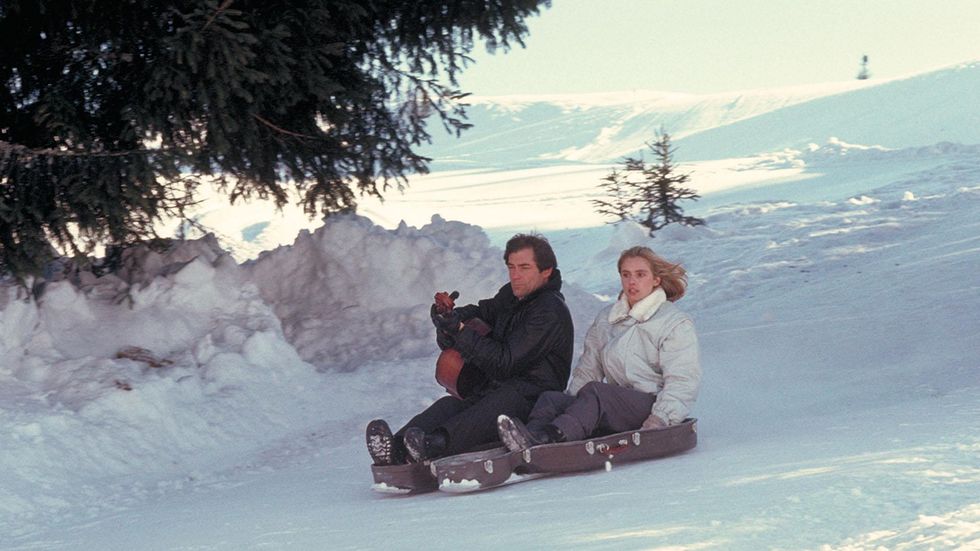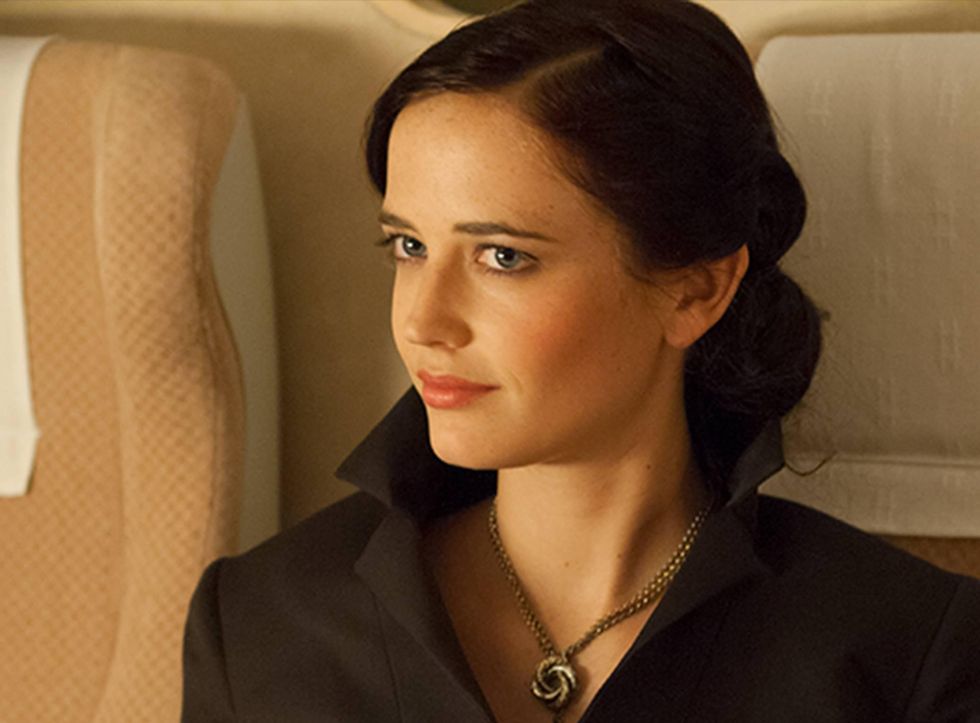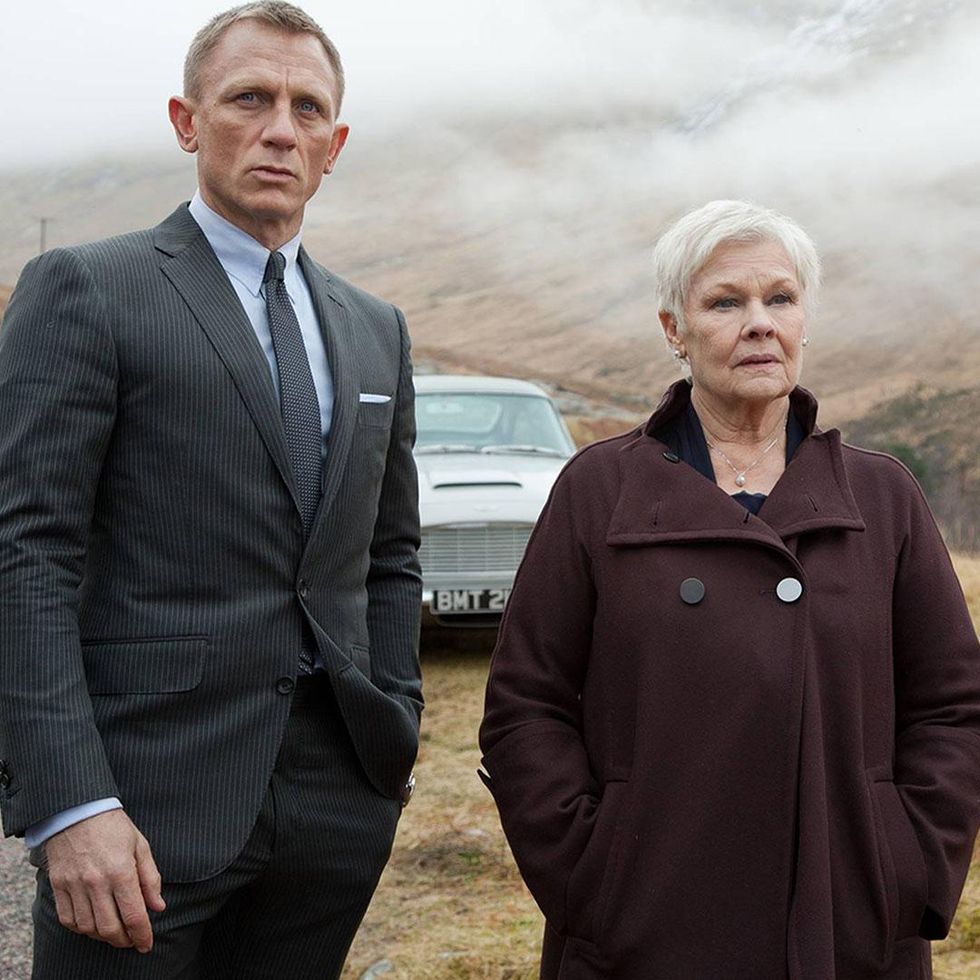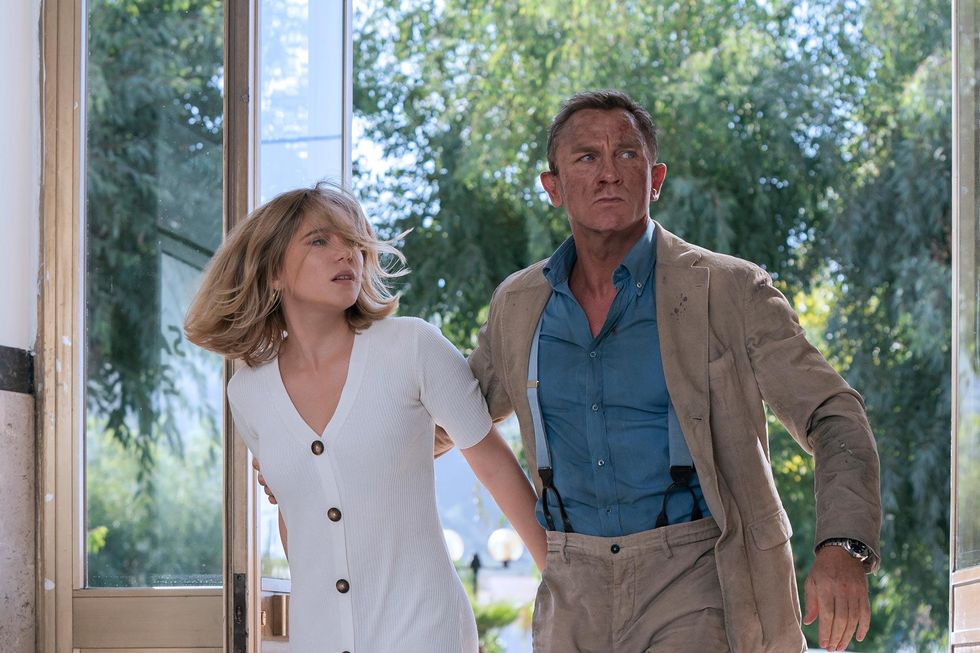How Jason Bourne and Marvel forced a re-examination of the OO7 character.
Spoiler Alert
In the pre-credits scene of No Time To Die, when James Bond and his love interest Madeleine Swann are driving into the southern Italian city of Matera, he tells her that they have "all the time in the world". This is a reference to the final scene of 1969's On Her Majesty's Secret Service and that movie's theme song "We Have All the Time in the World", sung by Louis Armstrong, which is reprised at the end of this latest Bond outing.
On Her Majesty's Secret Service (or OHMSS, as it's affectionally dubbed by fans on the internet) is the only 007 film starring Aussie George Lazenby as the secret agent. The film was received badly at the time of its release but has undergone a well-deserved critical re-evaluation in recent years. Its admirers include filmmakers Steven Soderbergh and Christopher Nolan, who paid homage to OHMSS in his sci-fi blockbuster Inception.
Many viewers point to the tragic love story between Bond and Tracy di Vicenzo (the late Dame Diana Rigg) as what sets it apart from other films in the series. The story ends with Bond holding the dead body of his wife, still in her wedding dress, in his arms, with tears streaming down his cheeks. It is a film that showed the vulnerability of Bond, and is full of emotion, romanticism and ultimately, cynicism.
Fast forward to 1987: when Roger Moore stepped back from the character after seven films, The Living Daylights takes the series back to its roots by delivering a Cold War thriller. Timothy Dalton trades in Moore's quips for a serious, cool edginess. Dalton's Bond is passionate, and genuinely reacts with a vengeance when his ally Saunders is killed by the villains in Vienna. He also falls in love with cellist Kara Milovy, in one of the most tender relationships of the series.
When the film ends with the iconic 'Bond, James Bond' line, we understand the character in a whole new light. Suddenly, the misogyny and the detached, stoic exterior make sense.
It can be argued that Daniel Craig's tenure as Bond is a direct continuation of the timbre in which Lazenby and Dalton played the character, rather than the more jokey iterations of Sean Connery, Roger Moore or Pierce Brosnan.
The Bourne Identity (2002) was released the same year as Brosnan' final Bond adventure Die Another Day and it changed the way audiences saw the spy action genre. While Die Another Day had Bond surfing on CGI waves, sword fighting with Madonna and up against a British man in a mechanised combat suit who was actually a North Korean colonel with daddy issues, Bourne had real stunts and sincere drama. The Bond franchise needed to re-invent itself yet again.
When Bond came roaring back into cinemas in 2006, he was more Bourne than Bourne. Casino Royale drew extensively from Ian Fleming's original source material and gave us Bond who was a reckless, brutal assassin, one who also bares his heart for a woman who ends up breaking it. When the film ends with the iconic "Bond, James Bond" line, we feel like we understand the character in a whole new light. Suddenly, the misogyny and the detached, stoic exterior make sense.
Bond has always been a problematic character and the films have featured an overwhelmingly Anglocentric bias. But, in Daniel Craig's five-film Bond arc, the character has evolved greatly. The series' attitude towards foreign (read: non-British) cultures are deeply rooted in original creator Ian Fleming's mid-20th century worldview. Western Europe is romanticised and pitted against the an Eastern Europe suffering under the yoke of communism. Bond's exuberant entrances into Amsterdam or Paris are contrasted with dull, drab colours of Czechoslovakia or Yugoslavia under communist rule. Much of Asia, the Middle East and Northern Africa are heavily exoticised and reoccurring locations like Cuba and Istanbul remind audiences of the cross-cultural geo-political landscape that Bond is meant to exist in.
With Casino Royale and Quantum of Solace, one can notice an immediate change in the use of international locations compared to post-Cold War Russia and the glitzy, shiny Hong Kong of the Brosnan era. In Craig's first two films, although locations are used as an alluring cinematic backdrop, they're presented in an understated way – more as unique, visually striking settings than as cultural stereotypes representing ideologies.
Craig's films also dramatically shift the series back to a degree to a realism unseen since Dalton. Our introduction to his Bond is through a now-famous black-and-white sequence in which he brutally kills a man in a dirty bathroom in Prague and in doing so, gains his license to kill. He is immediately established as a cold-blooded killer, an assassin with only Queen and Country in mind. Le Chiffre, his nemesis in Casino Royale, is a financier of terrorists who must recoup his lost money. The villain's plan in Quantum of Solace is to become the sole water provider for drought-ridden Bolivia. This is all pointedly different to, let's say, Stromberg's plan to annihilate the world and create a new underwater civilisation in The Spy Who Loved Me.

Bond's woman problem
The other major aspect of the series that the Craig films have aimed to progress is its depiction of female characters. The 'Bond girl' stereotype is well-known; attractive women with ludicrous names such as Pussy Galore and Holly Goodhead, whose primary purpose is to be a damsel-in-distress and Bond's sexual partner. Apart from in OHMSS and the two Dalton films, he never seems to have any true emotional connections with his Bond Girl foil.
Brosnan's films did try to subvert the formula, to mixed results. Michelle Yeoh's Wai Lin and Halle Berry's Jinx are presented as fellow secret agents and Bond's equal, but both are sidelined by each films' finale. Famke Janssen's Xenia Onatopp in Goldeneye is a fierce villain, but only insomuch as she is an objectified henchwoman with killer thighs. Sophie Marceau gives a brilliant performance in The World is Not Enough as Elektra King, but her character is relegated as a secondary villain who falls in love with the man by whom she was abused as a child. It's uncomfortable and insulting, suggesting that a female villain can't really stand alone to be the mastermind.
It's not until Eva Green's portrayal of Vesper Lynd in Casino Royale that we once again see a tender relationship form, one in which Bond's cold heart is melted. Craig's Bond and his female companions form connections because of shared trauma. In the world of international espionage, of spies and clandestine organisation doing battle in the shadows, most people are broken and beaten down on the inside. These later films show a modern Bond revealing his humanity and, pardon the pun, bonding with female characters over pain that only they can truly understand. Significant screen time is devoted to the backstory of the Bond women, and both Casino Royale and Spectre anchor their emotional core on the love stories between Bond and Vesper/Madeleine respectively.

Post-modern Bond
In 2012, Skyfall was released to critical acclaim and became the highest-grossing Bond film to date. In celebration of its 50th anniversary (the first Bond adventure Dr. No was released in 1962), the series gave us a post-modern Bond. Although previous Bond films contained references and fourth wall-breaking jokes, Skyfall is an in-depth deconstruction of the character and the series' tropes.
Director Sam Mendes comes from a tradition of films that would be considered high art compared to Bond (American Beauty, Road to Perdition), and he treats his subject matter with as much care and respect as his other projects, delivering the best that the series has to offer. Skyfall peels back the layers of the character by exploring his relationship with Judi Dench's M and taking audiences to his childhood home.
The charm and allure of a womanising secret agent who saves the world is stripped back to reveal a broken, orphaned man who knows nothing else than to kill, who is sent into life-threatening situations by a boss who may at any point abandon him. The villain Raoul Silva, played by a menacing Javier Bardem, is a twisted reflection of Bond himself, having been an agent abandoned by M in Hong Kong, disavowed, and left to be tortured.
Skyfall also re-introduces classic Bond series elements that were left behind in Craig's first two movies. Gadgets are back, so are witticisms, but most importantly, Mendes and his team re-invent Q and Moneypenny for the modern age. Ben Whishaw takes on the role made iconic by the late Desmond Llewelyn by portraying him as a new age whiz kid, and Naomie Harris' field agent-turned-secretary's flirtatious moments with Bond feels like a respectful, updated twist on earlier iterations of their relationship.

Between the release of Skyfall and 2015's Spectre, two major things happened. One was the successful continuation of the Marvel Cinematic Universe (MCU), an interconnected web of superhero movies based on the comic books, after The Avengers. The other was 007 studio Eon Productions regaining the rights to the evil organisation SPECTRE and Bond's arch-nemesis Ernst Stavro Blofeld.
Marvel makeover
The series has always changed with the cinematic landscape around it – look no further than Bond being sent into space in Moonraker two years after the first Star Wars. The MCU was this generation's Star Wars moment, and Spectre feels as reactionary as Moonraker.
It retconned all of Craig's films into one cohesive story in which Christoph Waltz' Blofeld, to whom Bond was an adopted younger brother, was behind all of his previous troubles. What Mendes attempted to do with Spectre was to mythologise Bond, aiming to cast Craig's films onto a plane of grander emotional scale. However, it came across as rushed and unnecessary.
With No Time To Die, Craig's tenure as Bond comes to an end. It is a truly bizarre film, with extremely lofty ambitions. On the one hand, as mentioned before, it's a spiritual successor to On Her Majesty's Secret Service's tender depiction of a Bond in love. On the other, it harkens back to the two 007 adventures directed by Lewis Gilbert, You Only Live Twice and The Spy Who Loved Me, known for their sleek action sequences, special effects and gigantic finales in the villains' lairs.
Director Cary Joji Fukunaga, of Beasts of No Nation and True Detective fame, delivers on these back-to-basic thrills, aided by colourful, dynamic cinematography by Linus Sandgren. The action is superb in this new film, with the opening motorcycle stunt, a misty forest sequence, and a one-shot stairwell fight being standouts that will be remembered as series highlights in years to come.
The villains this time around are appropriately and properly outlandish in a way none of the previous Craig films are. Rami Malek's character is named Lyutsifer Safin, for goodness' sake, and his plan is to kill millions of people using nanobot technology. The secondary baddies include a kooky Russian scientist and a silent henchman with a glass eye. Craig's outings have edged back into Roger Moore territory, almost leaving Mads Mikkelson's Le Chiffre in Casino Royale looking like an outlier.
Phoebe Waller-Bridge, the one-woman powerhouse behind hit television show Fleabag, was brought in to flesh out the film's female characters. This is a post #MeToo Bond. The film makes the transition well and is better for it. What strikes differently immediately is how much time is devoted to showing Madeleine Swann's backstory and life, giving the character dimension that Spectre failed to offer.

Craig's Bond has also never been this expressive. Here is a wounded Bond that learns to let go of the past, and instead of brutally taking his pain out on the people around him. He expresses his guilt, his regret, and his affection to the woman he loves. In a pivotal scene in which Bond discovers himself being a father, Sandgren lenses Craig and Seydoux with exquisite soft lighting reminiscent of how he shot Ryan Gosling and Emma Stone in La La Land.
Lashana Lynch's Nomi and Ana de Armas' Paloma also shine in the film as female foils to Bond, and possibly, for the first time in the series history, female characters who are truly presented as his equal. They are never relegated to damsels-in-distress and work together with Bond for common goals in their respective scenes. When Nomi, who takes over the 007 moniker in this film, gradually develops respect for Bond, and vice versa, it is because both characters are more than their stereotypes let on.
Craig's post-modern Bond ends his journey without the mission, martinis, or sex on his mind for the second time in 50 years. The last was in OHMSS where he was left a broken soul. Here, he dies a hero, with his relationships and family, his wife and daughter, in his heart. As the screen fades to the sound of 'We Have All of Time in the World', you can't help but feel moved.
Bond has come a long way and has proved adept at adapting to the times. No doubt, when 007 graces our screens again in a few years time, he (or she) will have evolved again. That on-screen progress is for the better.
Kevin is a Media (Communications and Journalism) Honours student at UNSW who has also written for Tharunka and Blitz. He is passionate about cinema, gastronomy and history.



Cultural ping pong: Dancing on the edge of two worlds